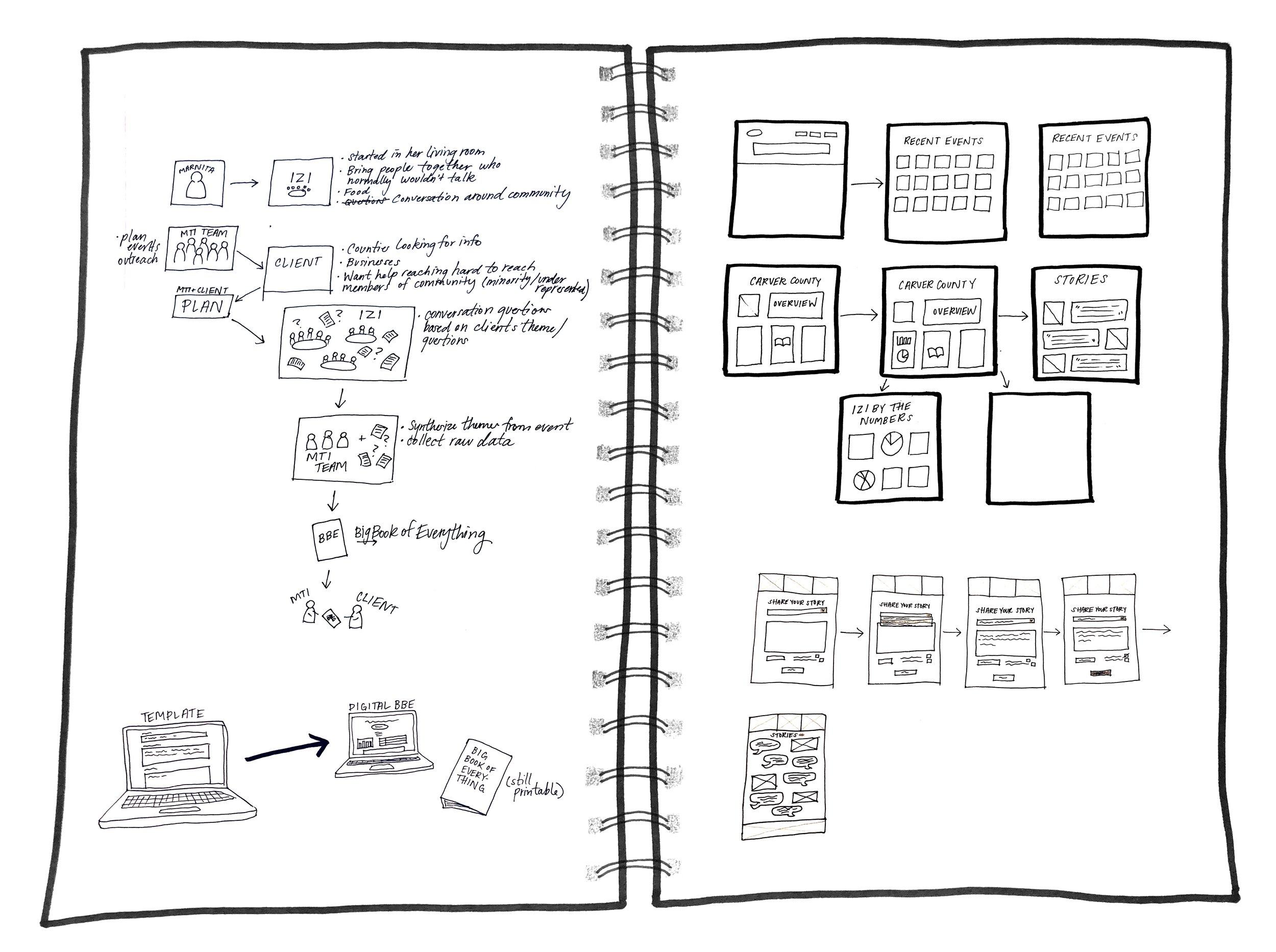
Marnita's Table
Marnita’s Table is an organization based in the Twin Cities that focuses on bringing people together over a meal and have conversations that bridge the divide between race, class, and culture. The findings and data that come from these conversations are important and can help create positive change within communities. Currently, all of the findings and raw data are stored in a “Big Book of Everything” and given to Marnita’s Table’s clients after these events. Marnita’s Table wanted to digitize this book, give the public a way to interact with the data, and create a space for where peoples stories from these gatherings could carry on long after the meal was over.
Methods
User Interviews - Information Architecture - Stakeholder Maps - Content Audit
Tools
Axure - InVision - Sketch - Low and High Fidelity Prototyping

DIVING IN
The team I was on met with Marnita and a few people from their team to kick off this project. Hearing what they do and how they do it was really exciting and the passion they have for bringing people from all walks of life together was clear. After the meeting the team left knowing that we needed to find a way to give these people an easy and meaningful way to digitize their content. They had more important things to worry about than lots and lots of paperwork, and we knew streamlining that process would mean giving them more time to do what makes Marnita’s Table great.

After meeting with Marnita’s Table we started by combing through the “Big Book of Everything” we were left and did a content audit to see what they contained, how all of the information was laid out, and get a better feel for the information we were working with.

Inside each “Big Book of Everything” or BBE is it as abbreviated, was the event overview, insights, demographics of those who attended the event, raw data that is gathered, and lots of sign in sheets. We had started setting up interviews with both Marnita’s Table team as well as the clients that hire them, in this case we spoke to a couple people from the Carver County Public Health Department, to hear about what parts of the BBE are used by each.
From our time with Marnita’s Table’s team we boiled down a few key things. They needed a more consistent way to create the BBE, they had amazing stories from the events they’ve hosted over the years, and they knew they needed a better way to share the information that was gathered with people.
After talking with Bree and Richard from Carver County we gathered that they wanted both qualitative and quantitative data that showed them the numbers they needed but also the stories from people to give a voice to those numbers. They also wanted a way to share this information with people in their department as well as the larger Carver County community.
After hearing from these people who interact with the BBE and consulting with other designers we felt ready to tackle some more in depth prototyping.

Above is a peek inside my sketchbook for this project with some wireframe sketches, ideas, and a work flow our team used to visualize Marnita’s Table’s process. Below is some of the team working to evaluate the ideas we were developing.

BRINGING IT ALL TOGETHER
We created a solution with three parts that would benefit Marnita’s Table, their clients, and the public.
1. A template for the Big Book of Everything for the Marnita’s Table team to use internally
2. A digitized version of the Big Book of Everything
3. A place for the public to share their stories from Marnita’s Table events
Part 1 - Template
Creating a template for the Marnita’s Table team was a great way to save them time, make sure the information collates correctly, and will keep things consistent. Not every event they host is the same, but there are themes that are consistent throughout.

Part 2 - Digital Big Book of Everything
The template can be exported into a digital version of the Big Book of Everything. This version can be sent to clients and be posted to their website so the public can access the data and findings. The portions that contain sign-in sheets with names and email addresses of attendees are password protected so only the client has access to them and not the public. Having this document in a digitized format will make it much easier to share.

Part 3 - Story Platform
The stories that are gathered from these events are incredible. Giving people a space to share a story about something or someone that impacted them is a great way to keep these conversations going even after everyone has left the table. We also coupled this with a social media outreach component, so people who attended the event would receive an email with a link to share their story or those who RSVP’d on Facebook would receive a message containing the link to the platform.

WRAPPING UP
Ultimately, the suggestions and prototypes we created are going to save the Marnita’s Table team time so they can do what they do best, it will give their clients an easier way to view this important data, and it will give the public the opportunity to view what came of the event they attended.